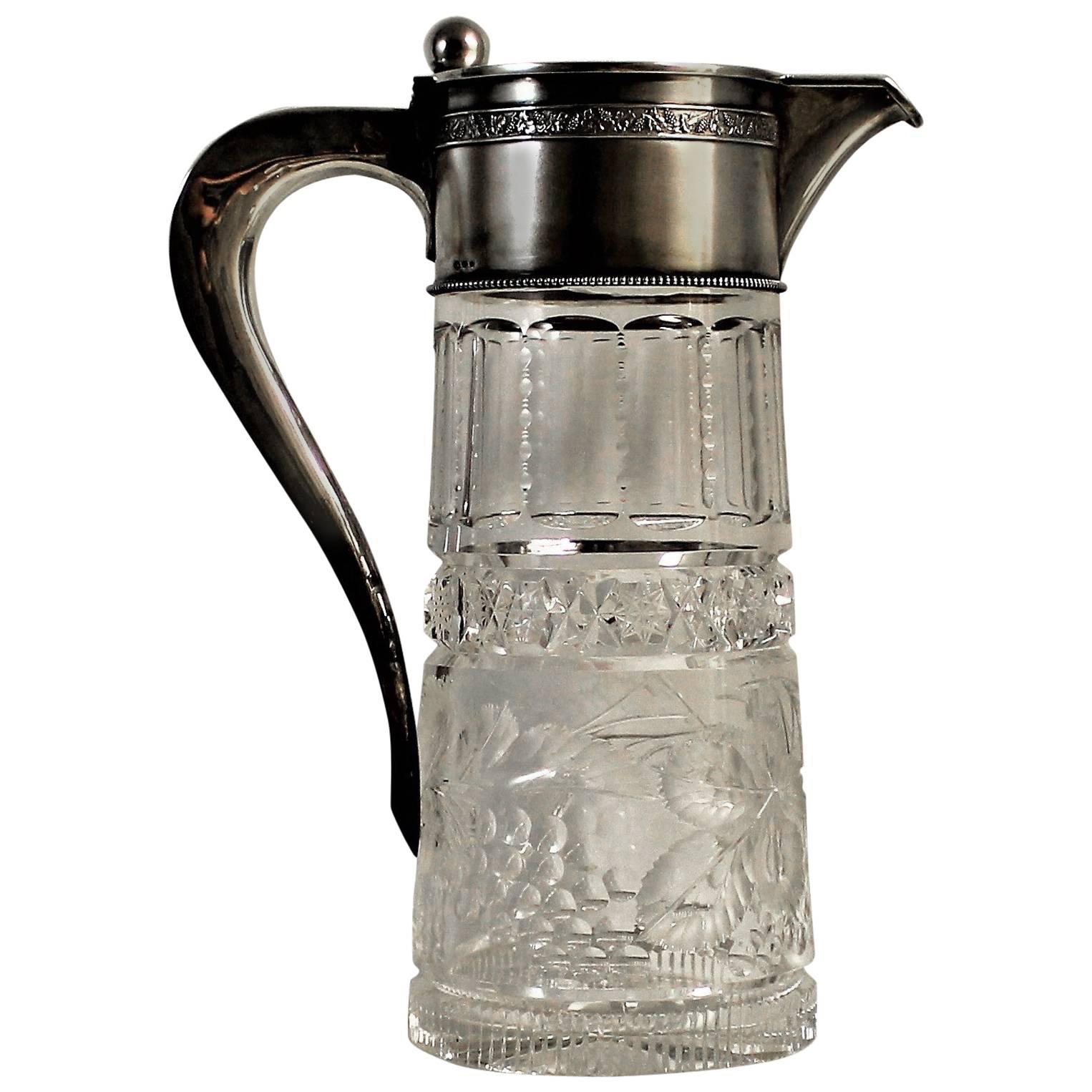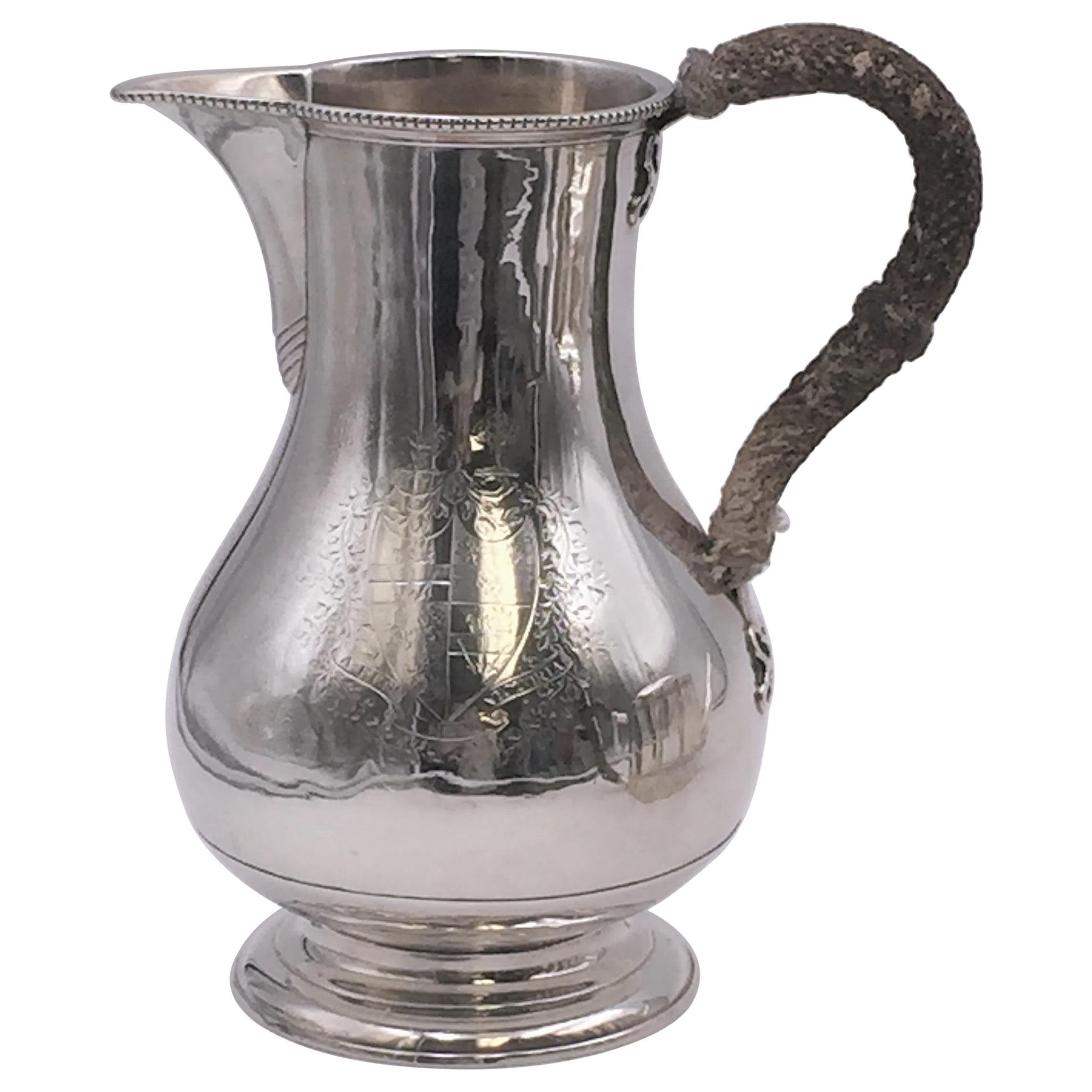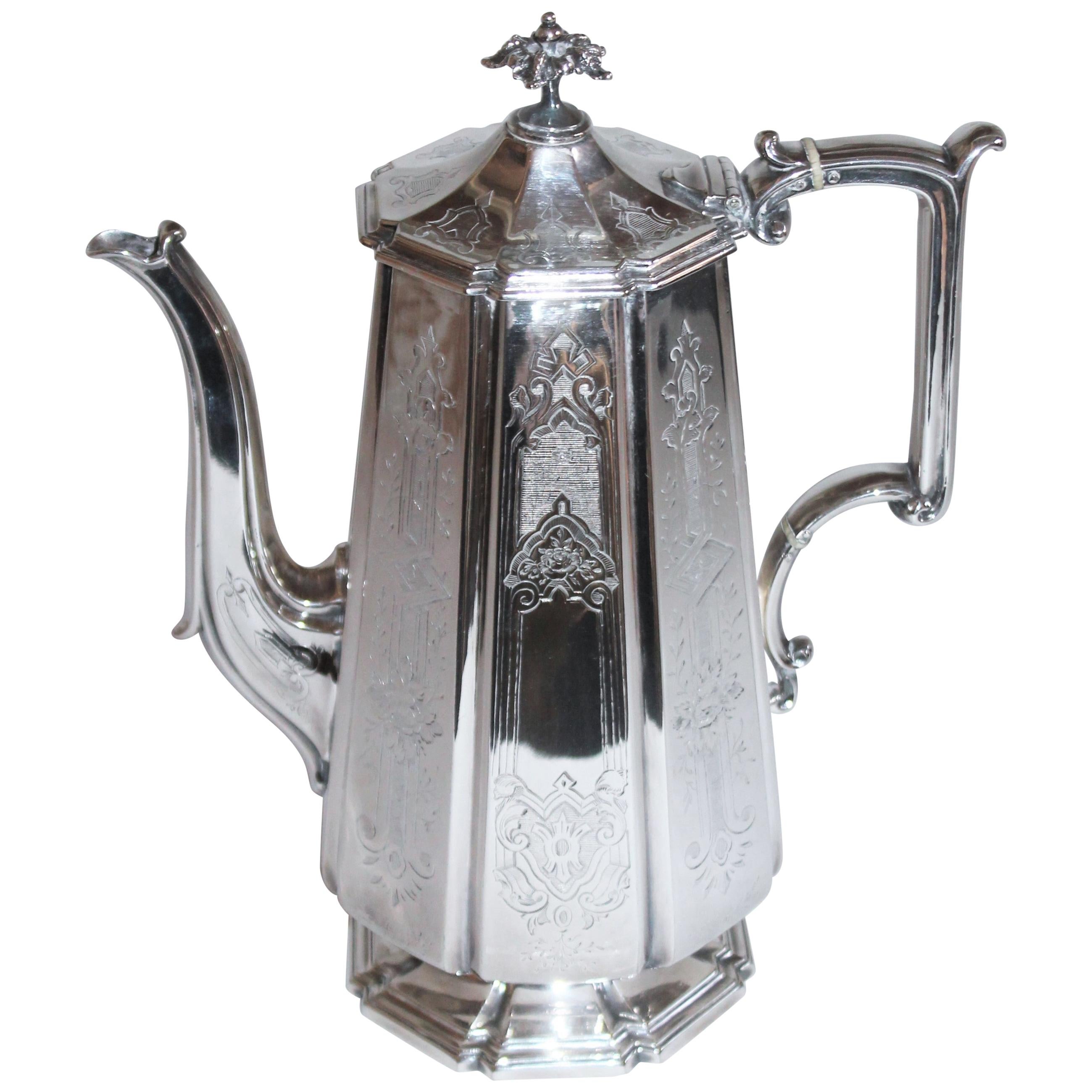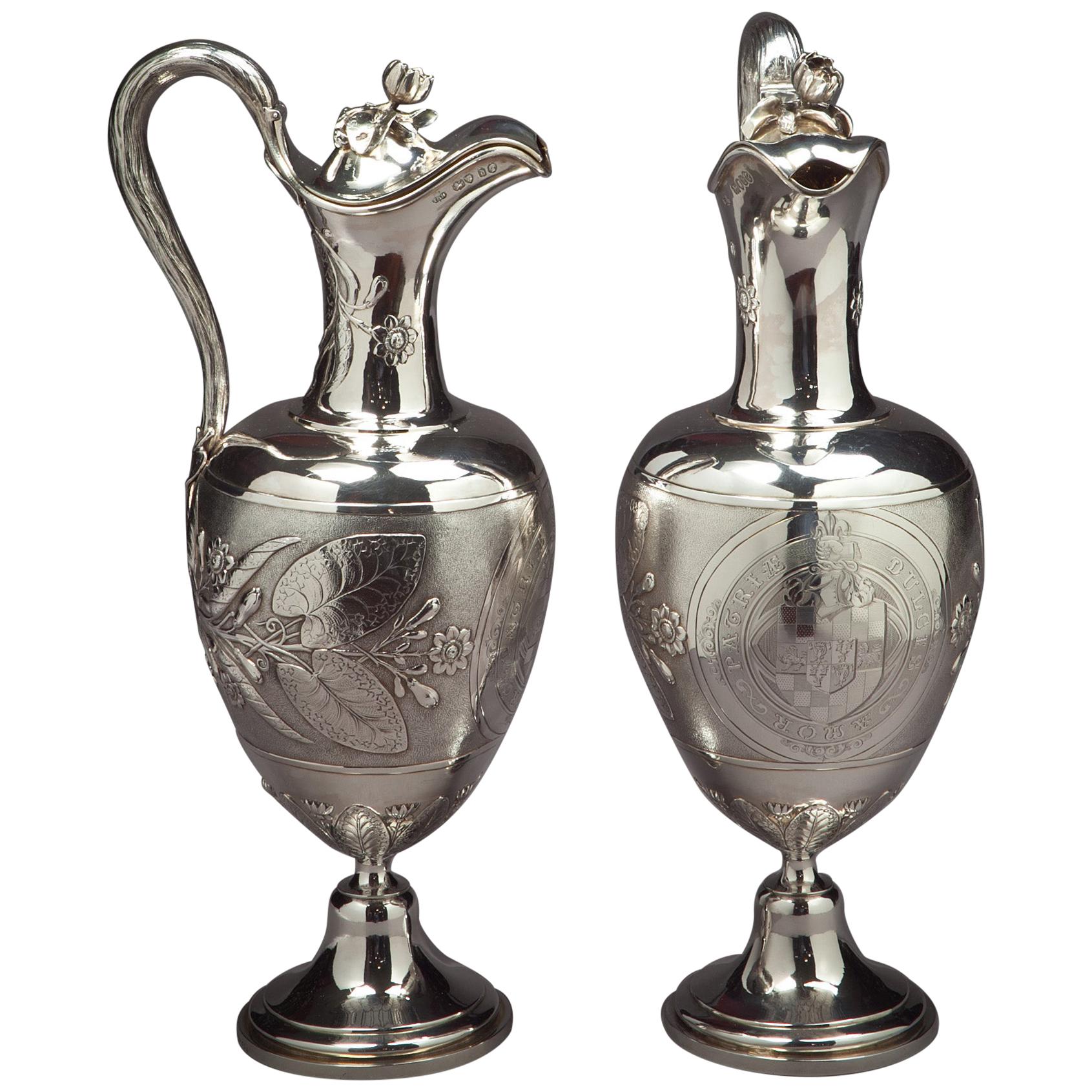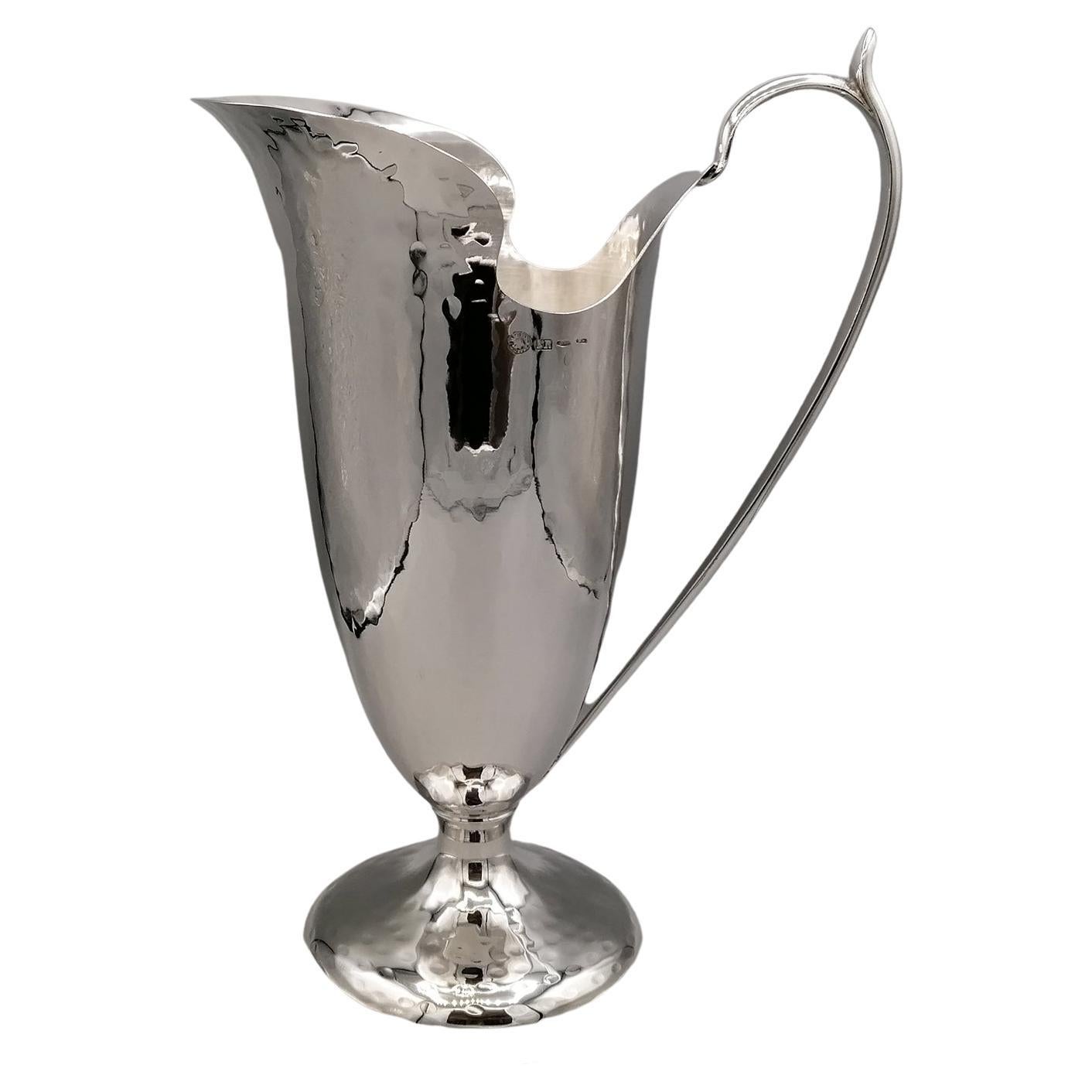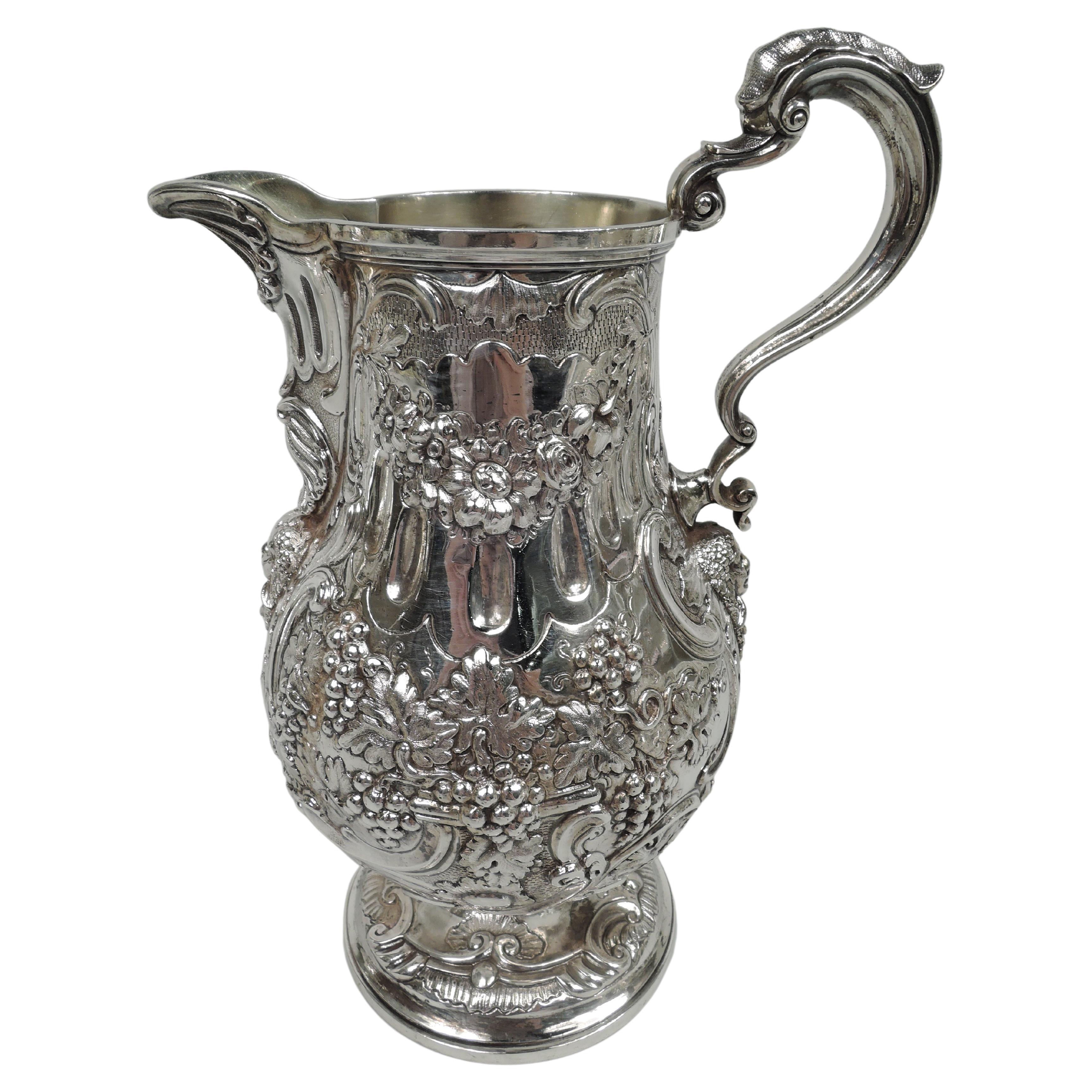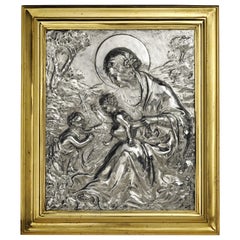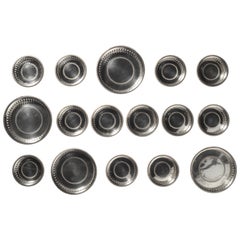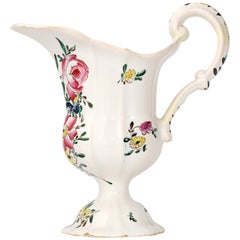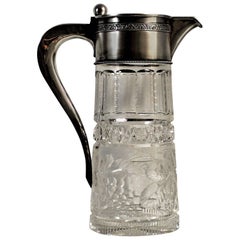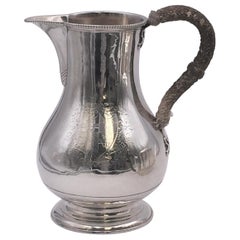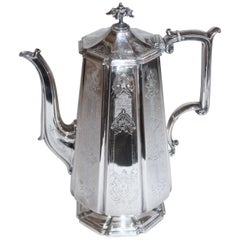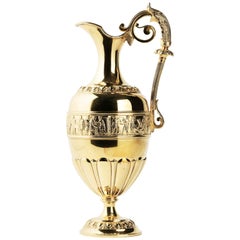
19th Century Victorian English Silver-Gilt Pitcher, 1875
View Similar Items
Want more images or videos?
Request additional images or videos from the seller
1 of 17
19th Century Victorian English Silver-Gilt Pitcher, 1875
About the Item
- Creator:Frederick Elkington (Maker)
- Dimensions:Height: 13.59 in (34.5 cm)Diameter: 6.3 in (16 cm)
- Style:Victorian (Of the Period)
- Materials and Techniques:
- Place of Origin:
- Period:
- Date of Manufacture:1875
- Condition:Minor fading.
- Seller Location:Milano, IT
- Reference Number:1stDibs: LU4352214425111
About the Seller
4.3
Vetted Seller
These experienced sellers undergo a comprehensive evaluation by our team of in-house experts.
Established in 1860
1stDibs seller since 2018
19 sales on 1stDibs
Typical response time: 4 hours
Associations
International Confederation of Art and Antique Dealers' Associations
More From This SellerView All
- 19th Century Italian Sterling Silver Madonna, circa 1830Located in Milano, ITEmbossed and engraved silver plaque La Madonna del lago (The Madonna of the Lake) Probably Milan, post 1824 Brass frame It measures 16.14 in x 13.85 in (41 x 35.2 cm) and it weighs 10.357 pounds (4.698 g): silver 1.31 pounds (598 g) + brass 9.03 pounds (4.100 g) State of conservation: some abrasions on the bottom. The frame is old, but not original. The plaque is made up of a sheet of embossed and engraved silver, and held in a solid brass frame. It depicts the “Madonna del lago” – “Madonna of the Lake” - (the Madonna with Child and San Giovannino) by Marco d'Oggiono (Oggiono, 1474 circa - Milan, 1524 circa), while changing only the background landscape. Almost certainly the subject reproduced in the plaque was taken from a famous engraving by Giuseppe Longhi (Monza, 1766 - Milan, 1831), one of the greatest engravers of his era. The silver is unmarked, probably because originally the Madonna was due to be exposed in a church: sometimes precious metals destined for worship and liturgical use would be exempted from payment and were, therefore, not marked. It is very likely that the plaque was made in Milan because in this city in 1824 the engraving by Giuseppe Longhi was made and printed. In addition, in Milan, the alleged lost painting by Leonardo da Vinci in his Milanese period (1482-1500) would be produced; this is the painting from which Marco d'Oggiono took his version. The painting Marco d?Oggiono was one of Leonardo da Vinci's most brilliant students and collaborators (D. Sedini, Marco d’Oggiono, tradizione e rinnovamento in Lombardia tra Quattrocento e Cinquecento, Roma 1989, pp. 151-153, n. 56; p. 225, n. 124, with previous bibliography). His style reflects in every way that of the Tuscan Maestro, so much so that he was the one who executed some copies of da Vinci's paintings. The execution of the “Madonna del Lago” probably draws inspiration from a lost painting by the Maestro, created while he was living in Milan (1482-1500). There are many similarities with other works by Leonardo such as the “Vergine delle rocce” or the “Vergine con il Bambino e San Giovannino, Sant’Anna e l’Agnello”. The painting, from which the drawing and then the famous engraving were taken, is found today at the M&G Museum of Bob Jones University in Greenville, South Carolina, where it came to rest after the sale of the Harrington Collection in London in 1917. The work appears in the inventories of the collection of Napoleon and Joséphine Bonaparte at the castle of Malmaison, before 1809. The Malmaison building was born and developed in the 17th and 18th centuries. In the 18th century it belonged to Jacques-Jean Le Coulteux du Molay, a wealthy banker. Later, during the Directory, Joséphine Bonaparte de Beauharnais bought it on April 21st, 1799, but settled at the castle definitively only after her husband separated from her in 1809. She remained there until 1814, the year of her death. When Joséphine died, the estate passed to her son Eugène de Beauharnais, who moved to Munich with his whole family in 1815, bringing with him the collection of paintings he inherited from his mother. Eugène died in 1824 and his wife Augusta of Bavaria (von Bayern), unable to keep it, in 1828 sold the Malmaison to the Swedish banker Jonas-Philip Hagerman. It is likely that in this period Augusta also sold part of the paintings inherited from her husband, including the “Madonna del Lago”. This painting then came into the possession of Leicester Stanhope, fifth Earl of Harrington (1784 - 1862) and then was passed down to his descendants. In 1917, at the death of Charles, eighth Earl of Harrington, his brother Dudley inherited the title and properties and he put up a part of his collections for sale. Among these, precisely, the painting by Marco d'Oggiono was to be found. On the occasion of that auction the painting was presented as a work by Cesare da Sesto, by virtue of a handwritten note by the Countess of Harrington on the back of the table. However, already in 1857, the German critic Gustav Waagen had identified Marco d'Oggiono as the author of the painting, then exhibited in the dining room of Harrington House in London (Treasures of Art in Great Britain, in 4 volumes, London, 1854 and 1857). The engraving Giuseppe Longhi was one of the most renowned engravers in Italy between the end of the 18th century and the first quarter of the 19th century. In 1824 Giuseppe Longhi, based on a design by Paolo Caronni, made a famous engraving of the painting of Marco d?Oggiono. The activity of Longhi was then at the peak of his notoriety, enough to earn him very substantial commissions; it is not risky to suppose that some of his successful engravings were also reproduced using other means: in our case in silver. (A. Crespi, a cura di, Giuseppe Longhi 1766–1831 e Raffaello Morghen...Category
Antique 1820s Italian Neoclassical Sterling Silver
MaterialsSterling Silver, Brass
- 19th Century Italian Sterling Silver Glass and Wine Coasters, circa 1830By Antonio MantelliLocated in Milano, ITTwelve silver glass coasters and four silver wine coasters. Silversmith Antonio Mantelli Milan, circa 1830 They measure: Glass coasters: 0.78 in high x 3.46 in diameter (2 cm x 8.8 c...Category
Antique 1820s Italian Neoclassical Sterling Silver
MaterialsSterling Silver
- Maiolica Italian Pitcher Ferretti Manufacture, Lodi Circa 1770 - 1780By Antonio FerrettiLocated in Milano, ITMaiolica pitcher Antonio Ferretti Manufacture Lodi, circa 1770-1780 Maiolica polychrome decorated “a piccolo fuoco” (third fire). It measures 8.66 x 8.66 x 4.33 in (22 x 22 x 11 ...Category
Antique 1770s Italian Rococo Ceramics
MaterialsMaiolica
- Large Italian Neoclassic Sterling Silver Coffee Pot, Milan, Circa 1830Located in Milano, ITEmbossed and engraved silver coffee pot Antonio Garavaglia Milan, Circa 1830 It measures 16.92 in (43 cm) in height and weighs 3.35 lb (1.520 gr) State of conservation: very good The large silver coffee pot has a round mouthpiece with a marked everted rim on which a pagoda lid rests; this is surmounted by a cock-shaped knob with a border decorated with small pods...Category
Antique 1820s Italian Neoclassical Sterling Silver
MaterialsSterling Silver
- Ancient Italian Neoclassic Sterling Silver Coffee Pot, Milan, circa 1850Located in Milano, ITEmbossed and engraved sterling silver coffee pot Tommaso Panizza (1805-1868) Milan, circa half of the 19th century It measures 13.97 in (cm 35.5) in height x 8.66 in (22 cm) x 4.7...Category
Antique 1840s Italian Neoclassical Sterling Silver
MaterialsSterling Silver
- Ancient Neoclassic Sterling Silver Coffee Pot, Palermo, Sicily circa 1789Located in Milano, ITAncient Neoclassic Sterling Silver Coffee Pot, Palermo, Sicily circa 1789 Embossed and engraved silver coffee pot Silversmith, probably Agostino Natoli Diego Di Maggio, Silversmith Consul in 1789 and 1796 Palermo, 1789 It measures 14.17 in (36 cm) high and weighs 2.76 lb (1.252 g) State of conservation: few signs of use and some slight blemishes The large silver coffee pot has a round mouthpiece with a markedly everted rim, on which hinges a domed lid with very full molded pod shapes; a closed bud surmounted by a small sphere serves as a knob. The polygonal neck descends and widens into molded elements that come together, with larger pods, at the point where it is attached to the body. The body in turn is united to a well-shaped foot, which ends in a flat base with a vertical rim. From the body rises a spout with a circular mouth accented with a thick rim. An angled loop, made of ebonized wood, is applied to the neck by means of a double-cone element having a sphere at its center; it ends in a silver cone...Category
Antique 1780s Sicilian Neoclassical Sterling Silver
MaterialsSterling Silver
You May Also Like
- 19th Century Continental Silver and Cut Crystal PitcherLocated in Hamilton, Ontario19th century continental silver and cut crystal pitcher.Category
Antique 19th Century European Sterling Silver
- Georgian or Scottish Sterling Silver Beer Pitcher, 18th or 19th CenturyLocated in New York, NYGeorgian or Scottish sterling silver beer pitcher with engraved coat of arms and applied ribbon-shaped decoration by the handle. Most likely 18th century ...Category
Antique 18th Century Scottish Georgian Pitchers
MaterialsSterling Silver, Silver
- 19th Century Heavy Silver Coffee PotBy Elkington Mason & Co.Located in Los Angeles, CAThis fine handcrafted coffee pot is in fine condition with detailed hall marks on the bottom and fine lines. The condition is mint. Elkington & Co electroplate with Elkington’s own ...Category
Antique Late 19th Century American Victorian Pitchers
MaterialsSilver
$956 Sale Price20% Off - Elkington & Co Set of 2 1860s Victorian Sterling Silver Claret JugsBy Elkington & Co., Frederick ElkingtonLocated in Jesmond, Newcastle Upon TyneAn exceptional, fine and impressive pair of antique Victorian English sterling silver claret jugs made by Elkington & Co; an addition to our Victorian silverware collection These exceptional antique Victorian sterling silver jugs have a tapering ovoid body onto a circular domed foot, in a Classic ewer style. The waisted neck of the each jug is embellished with a bright cut engraved undulating band of stylised leaf decoration flanked by plain applied ornamentations in addition to a broad band of scroll and simplified Akroter designs. Each jug is ornamented with individual fine and impressive female Grecian style figures, the first bearing a vine terminating staff and holding out a handled bowl, another passive character featuring long braids in her hair and holding her skirt in one hand and a tied bundle of wheat in the other and the third holding in both hands grapes with flowing garments intertwining her body. The lower portion of each body is encircled with a band of lobed decoration incorporating a circular motif to each alternating terminal, all filled with a matte pattern. These antique silver jugs are fitted with hallmarked domed hinged covers surmounted with an impressive scrolling lobed thumbpiece and featuring an imposing scrolling hinge. These Victorian silver jugs are fitted with fine and impressive cast sterling silver ribbed handles embellished with leaf designs enveloping four scrolling branches. The domed foot of each solid silver jug...Category
Antique 1860s English Victorian Sterling Silver
MaterialsSilver, Sterling Silver
- Antique Victorian Sterling Silver Claret Jug/ Water PitcherBy Martin Hall & Co.Located in Braintree, GBAntique Victorian Sterling silver claret jug/ water pitcher Made in England, London, 1861 Maker: Martin, Hall & Co (Richard Martin & Ebene...Category
Antique 1860s British Victorian Sterling Silver
MaterialsSilver
- 19th Century English Pewter PitcherLocated in Bradenton, FL19th century pewter pitcher with pewter handle. Etched on underside is name 'Colodny'. Weighs approximately 4 pounds. Wonderful old patina...Category
Antique 19th Century English Late Victorian Pitchers
MaterialsPewter
Recently Viewed
View AllMore Ways To Browse
Antique Pitcher Made In England
Relief Pitcher
Scene Pitcher
Sterling Pitcher England
Antique Metal Pitchers
Antique Metal Pitcher
Ran Round
Elkington Gilt
Ribbed Pitcher
Pitcher Lions Head
Retro Silver Pitcher
Pitcher Midcentury
Glass Pitcher With Handle
Vintage Glass Pitcher With Glasses
Mid Century Glass Pitcher
19th Century Glass Pitchers
Brown Pitcher
Pitcher Jug

